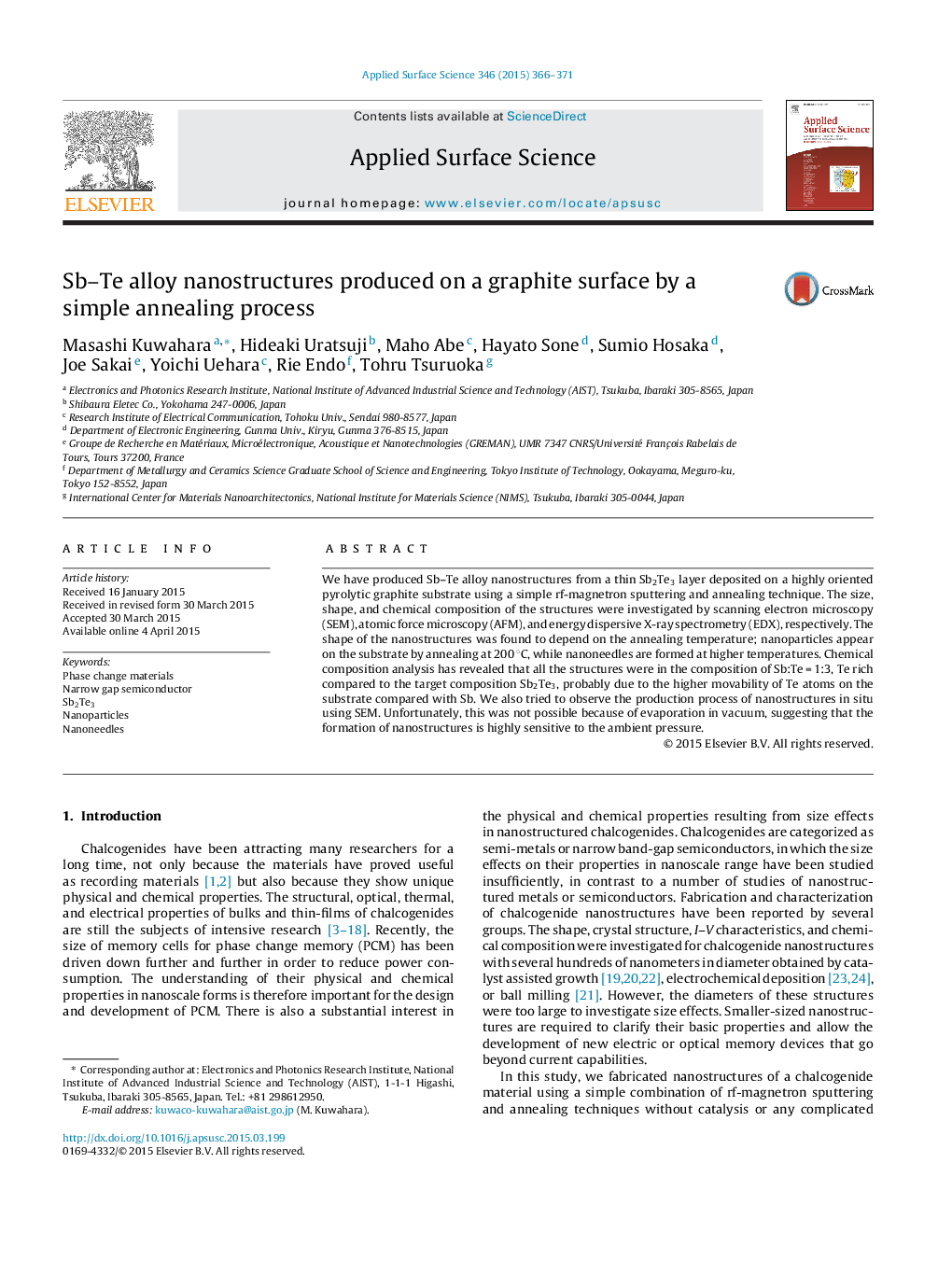| Article ID | Journal | Published Year | Pages | File Type |
|---|---|---|---|---|
| 5354845 | Applied Surface Science | 2015 | 6 Pages |
Abstract
We have produced Sb-Te alloy nanostructures from a thin Sb2Te3 layer deposited on a highly oriented pyrolytic graphite substrate using a simple rf-magnetron sputtering and annealing technique. The size, shape, and chemical composition of the structures were investigated by scanning electron microscopy (SEM), atomic force microscopy (AFM), and energy dispersive X-ray spectrometry (EDX), respectively. The shape of the nanostructures was found to depend on the annealing temperature; nanoparticles appear on the substrate by annealing at 200 °C, while nanoneedles are formed at higher temperatures. Chemical composition analysis has revealed that all the structures were in the composition of Sb:Te = 1:3, Te rich compared to the target composition Sb2Te3, probably due to the higher movability of Te atoms on the substrate compared with Sb. We also tried to observe the production process of nanostructures in situ using SEM. Unfortunately, this was not possible because of evaporation in vacuum, suggesting that the formation of nanostructures is highly sensitive to the ambient pressure.
Related Topics
Physical Sciences and Engineering
Chemistry
Physical and Theoretical Chemistry
Authors
Masashi Kuwahara, Hideaki Uratsuji, Maho Abe, Hayato Sone, Sumio Hosaka, Joe Sakai, Yoichi Uehara, Rie Endo, Tohru Tsuruoka,
